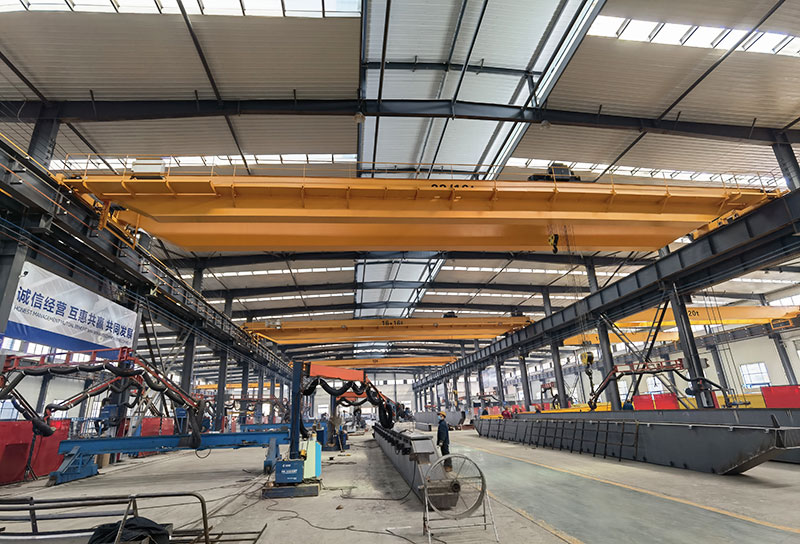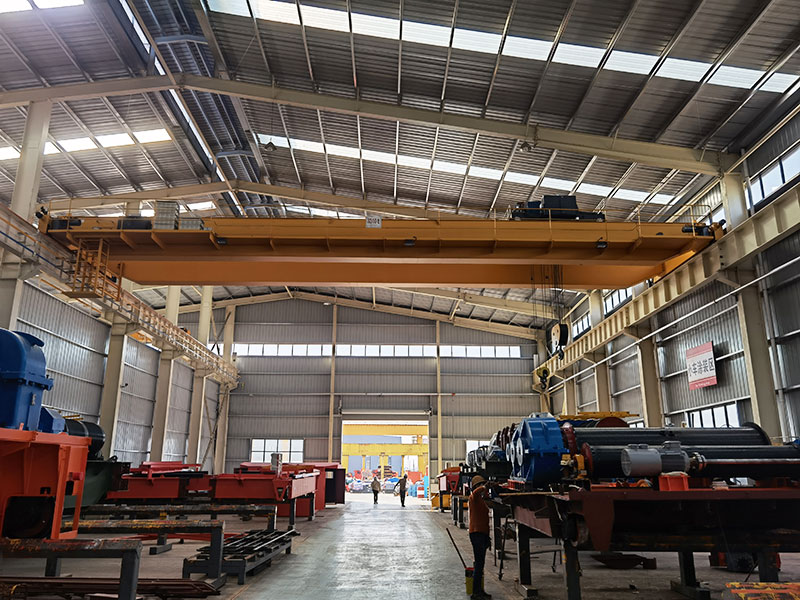In the ever-evolving industrial landscape, specialized industries often require unique lifting solutions to meet their specific needs. Custom double girder bridge cranes stand out as versatile and highly effective tools designed to handle the most demanding lifting tasks across various sectors. This article explores the significance of custom double girder bridge cranes, their advantages, and how they are tailored to suit the needs of specialized industries.

Understanding Double Girder Bridge Cranes
Double girder bridge cranes are a type of overhead crane designed with two parallel girders that support the trolley and hoist mechanism. These cranes are mounted on elevated runway tracks, enabling them to travel along the length of a building or facility. The dual-girder design provides enhanced stability and greater lifting capacity compared to single girder cranes, making them ideal for heavy-duty applications.
Key Components of Double Girder Bridge Cranes:
- Girders: Two main horizontal beams that support the crane’s load and distribute weight.
- Trolley: Moves along the girders and carries the hoist mechanism.
- Hoist: The lifting device that raises and lowers the load.
- End Trucks: Support the crane on the runway rails and enable horizontal movement.
- Control System: Operates the crane’s movements, including lifting, lowering, and traveling.
The Need for Customization
Industries such as manufacturing, aerospace, automotive, and energy often deal with highly specific and challenging lifting requirements. Standard double girder bridge cranes may not always meet these needs due to variations in load capacity, span, height, and operating conditions. Custom lifting solutions becomes essential to ensure that the crane performs optimally in its intended environment.
Factors Necessitating Customization:
- Load Capacity: Specialized industries may require cranes that can handle exceptionally heavy loads, often exceeding the standard capacity of off-the-shelf models.
- Span and Height Requirements: Custom cranes can be designed to accommodate specific building dimensions, ensuring efficient use of space and effective lifting operations.
- Operating Environment: Cranes operating in harsh or unique environments, such as extreme temperatures or corrosive atmospheres, need to be built with materials and features that withstand these conditions.
- Specialized Lifting Needs: Some industries require cranes with unique features, such as explosion-proof systems, precision positioning, or advanced safety mechanisms.

Advantages of Custom Double Girder Bridge Cranes
Custom double girder bridge cranes offer several advantages over standard models, particularly in specialized applications:
- Enhanced Load Capacity: Custom cranes can be engineered to handle higher load capacities than standard models, making these cranes suitable for heavy-duty tasks.
- Optimized Space Utilization: Tailored designs ensure that the crane fits perfectly within the available space, maximizing efficiency and safety.
- Increased Reliability: Custom solutions are built to withstand the specific conditions of the operating environment, reducing the risk of breakdowns and maintenance issues.
- Improved Safety: Custom cranes can be equipped with advanced safety features, such as overload protection, anti-collision systems, and emergency stop functions, to enhance workplace safety.
- Higher Efficiency: Customized controls and features streamline operations, reducing the time required for lifting and transporting loads and increasing overall productivity.
Applications in Specialized Industries
- Manufacturing Industry:
- Heavy Machinery Handling: Custom double girder bridge cranes are used to lift and transport heavy machinery and components within machinery manufacturing plants. They are designed to handle large and cumbersome items with precision and ease.
- Assembly Line Support: Cranes can be customized to integrate with assembly lines, providing precise positioning and movement for efficient production processes. Learn more about our lifting solutions for manufacturing industry: https://aicraneliftingsolution.com/industries/machinery-manufacturing/
- Aerospace Industry:
- Aircraft Assembly: In aerospace manufacturing, custom cranes are essential for assembling large aircraft components. These cranes are designed with high precision and stability to handle delicate and expensive parts.
- Component Testing: Double girder bridge cranes are used to lift and position aerospace components for testing and quality control, ensuring they meet rigorous standards.
- Automotive Industry:
- Vehicle Production: Custom cranes assist in the assembly of vehicles, including lifting and positioning heavy engine parts and other components. They are designed to support high-speed production lines and ensure accurate placement.
- Parts Handling: Cranes are also used for moving automotive parts between different stages of production and storage.
- Energy Sector:
- Power Plant Construction: In power plants, custom double girder bridge cranes are used to handle large and heavy equipment, such as turbines and generators. They are built to withstand the challenging conditions of power plant environments.
- Maintenance and Repairs: Cranes play a crucial role in the maintenance and repair of energy infrastructure, enabling the safe and efficient replacement of components.
Designing Custom Solutions
Designing a custom double girder bridge crane involves a thorough understanding of the client’s requirements and the operational environment. Key steps in the design process include:
- Needs Assessment: Analyzing the specific lifting requirements, including load capacity, span, and operating conditions.
- Design and Engineering: Creating detailed design plans that incorporate the necessary features and specifications. This includes selecting appropriate materials, components, and safety systems.
- Fabrication and Assembly: Manufacturing the crane components according to the design specifications and assembling them to ensure they meet quality standards.
- Testing and Commissioning: Conducting rigorous tests to verify the crane’s performance and safety. This includes load testing and operational trials.
- Training and Support: Providing training for operators and maintenance personnel, as well as offering ongoing support and service to ensure the crane remains in optimal condition.
Conclusion
Custom double girder bridge cranes are indispensable tools for specialized industries that demand high performance, reliability, and safety. By offering tailored solutions that address unique lifting requirements and operating conditions, these cranes play a crucial role in enhancing productivity and efficiency. Whether for heavy machinery handling, aerospace assembly, automotive production, or energy sector applications, custom double girder bridge cranes are designed to meet the highest standards of performance and safety, ensuring they deliver exceptional results in every application.